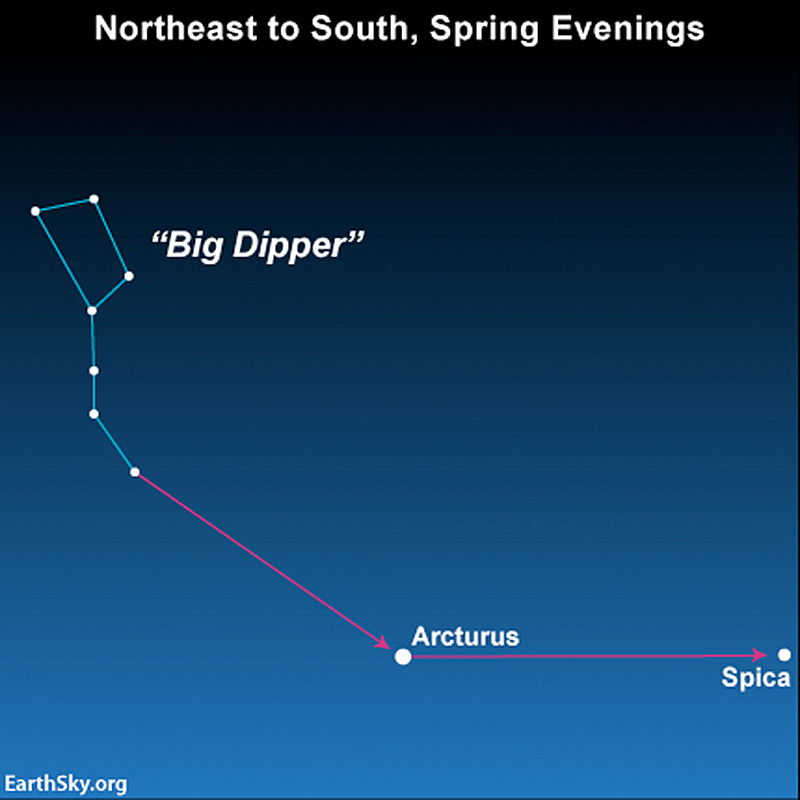
Moon near Spica
The moon in its monthly orbit will sweep past the bright star Spica in Virgo the Maiden this weekend. If you’re a night owl, you can spot the pair when they rise around midnight on the nights of January 13 and 14, 2023 (Friday and Saturday night). Early birds can see them on the mornings of January 14 and 15 (Saturday and Sunday morning).
Last quarter moon will fall at 8:10 p.m. CST on January 14 (2:10 UTC on January 15). A last quarter moon rises (approximately) at midnight.
The view from the Southern Hemisphere
The moon will appear near Spica as seen from around the globe, in the coming few days. But – depending on your location on Earth – your orientation of the night sky will change slightly from what’s shown on our chart. Try Stellarium for a precise star chart from your location on these dates.
Spica is really 2 stars
The star Spica is also known as Alpha Virginis. From its distance of 262 light-years away, Spica appears to us on Earth to be a lone bluish-white star in a quiet region of the sky. But Spica consists of two stars and maybe more. The pair are both larger and hotter than our sun. And they’re separated by only 11 million miles (less than 18 million km). They orbit their common center of gravity in only four days.
Read more about Spica, bright beacon if Virgo
Speed on to Spica
The moon will, inevitably, move on. But you can find Spica in the nights ahead by remembering this famous sky mnemonic: follow the arc to Arcturus and speed on to Spica.
That old saying – known to scouts and stargazers – describes using the famous Big Dipper to find Spica, and another bright star, Arcturus in the constellation Boötes.
At this time of the year, the Big Dipper doesn’t come into view until around midnight. Then you’ll find it in the northeast. And, in the mornings in January and February, the Dipper is high in the north. Just follow the curve in the Dipper’s handle until you come to the orange star Arcturus. Then continue that line to Spica.

Bottom line: See the waning moon near Spica in Virgo the Maiden on the nights of January 13 and 14, 2023, and in the mornings of January 14 and 15.
For more great observing events in the coming weeks, visit EarthSky’s night sky guide











